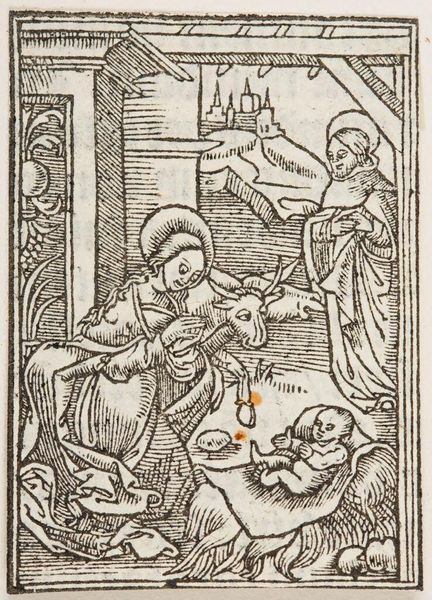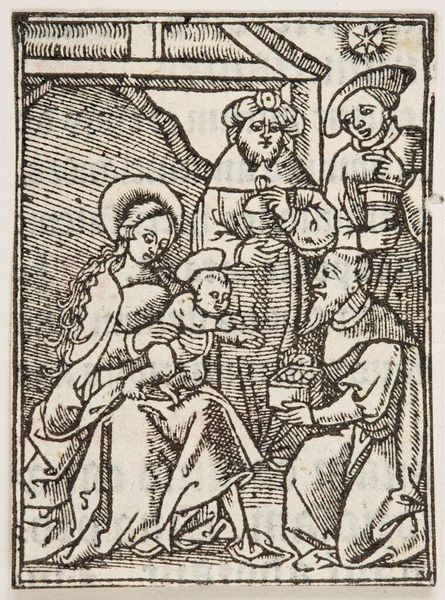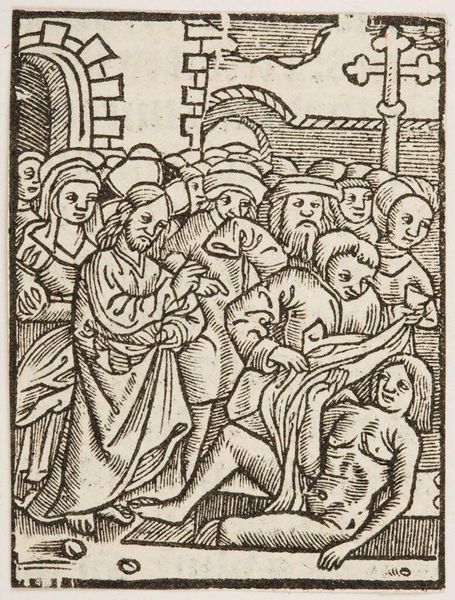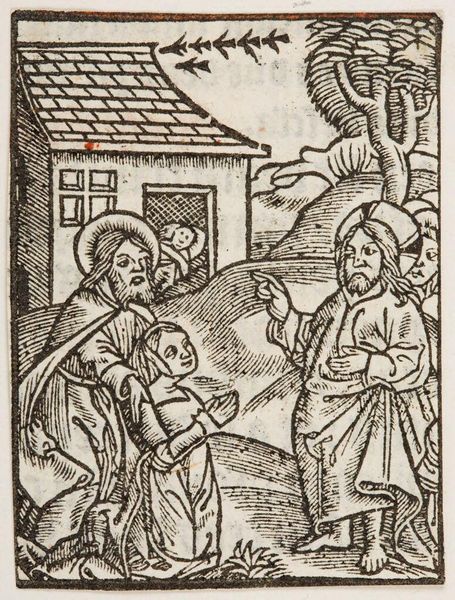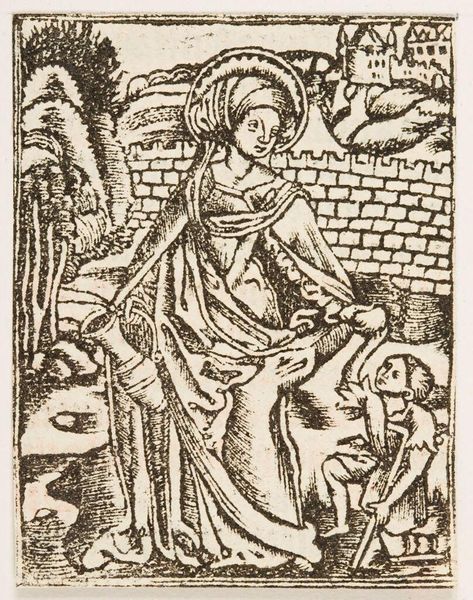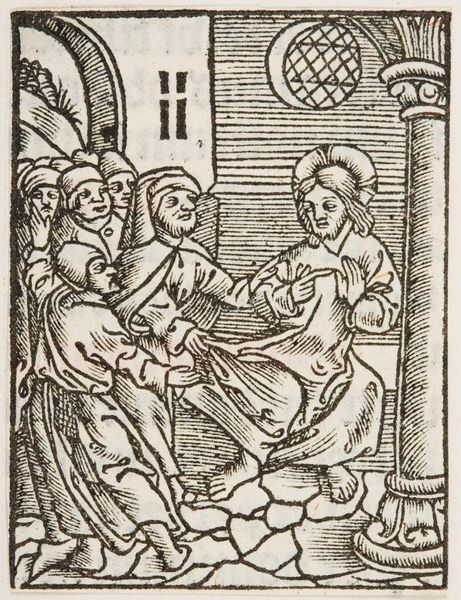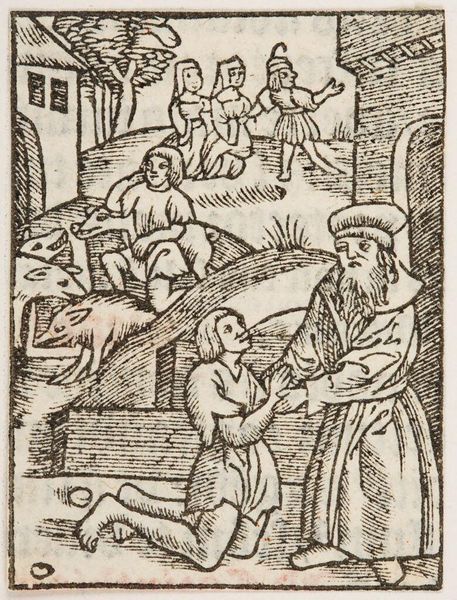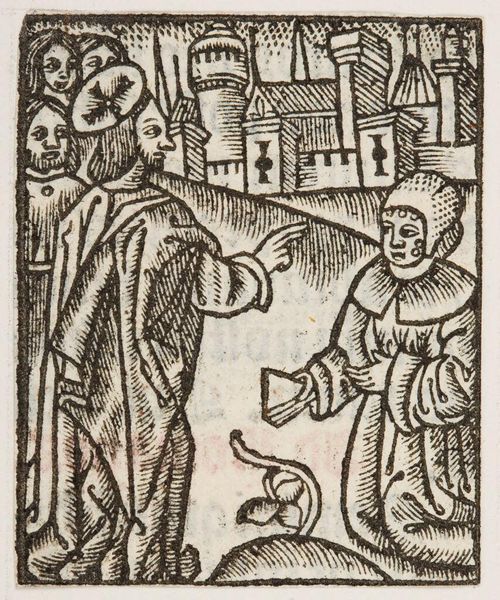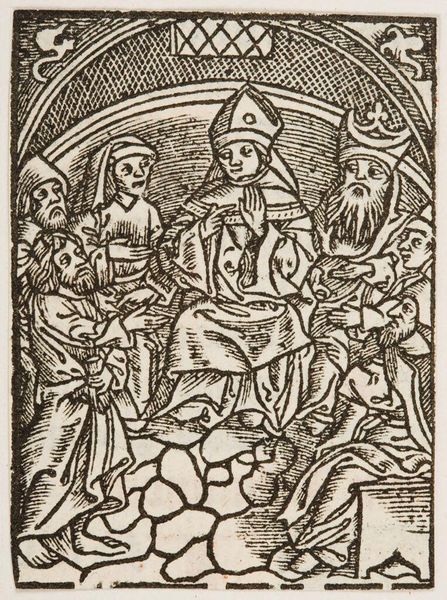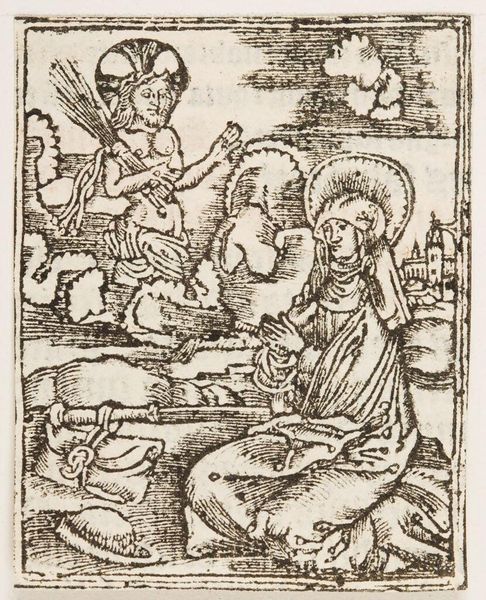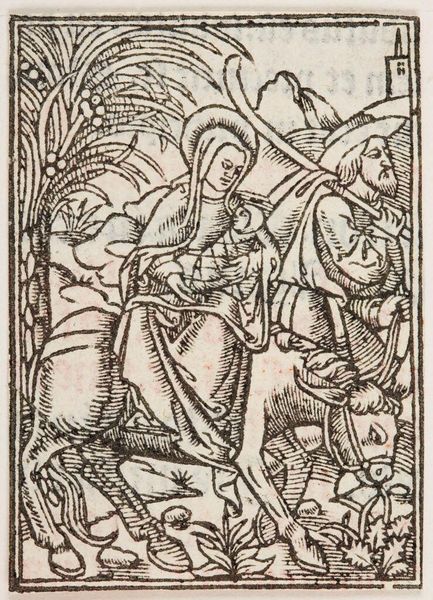
Copyright: CC0 1.0
Editor: Here we have an intriguing woodcut, "Adoration of the Virgin" by an anonymous artist. It feels dense and detailed, even at this small scale. What can you tell me about how this image circulated? Curator: This is an excellent example of the democratization of religious imagery. Woodcuts like this were relatively inexpensive to produce, making them accessible to a wider audience. Consider the social impact - who could now own and contemplate this scene? Editor: So it's less about the artist and more about the public that consumed it? Curator: Precisely. The power of the image lies in its capacity to instill faith and reinforce social norms. Where would you imagine these images would have been found, and how would their message be received? Editor: I guess I hadn’t thought about that. It really shifts the focus from artistic genius to cultural influence. Curator: Indeed. And remember, the meaning of the image is negotiated between the artist (or in this case, the publisher), the audience, and the socio-political context in which it is viewed.
Comments
No comments
Be the first to comment and join the conversation on the ultimate creative platform.
